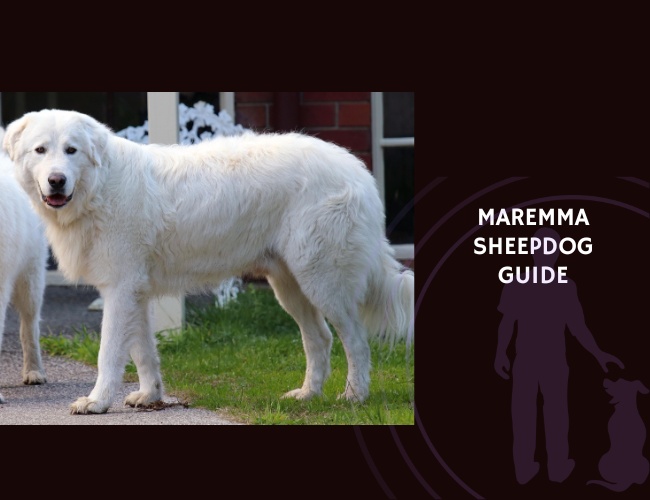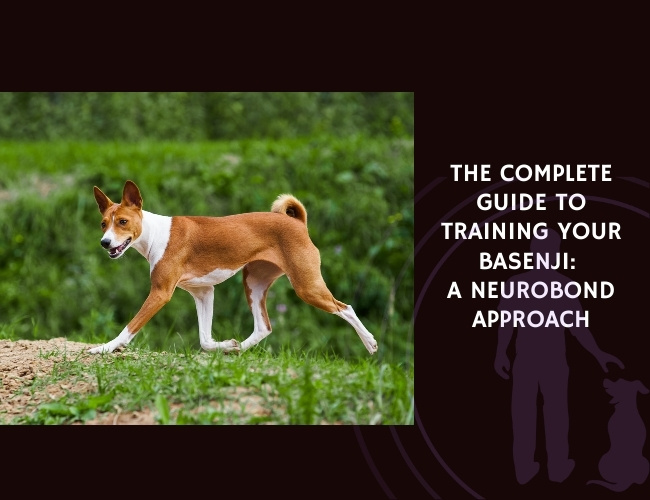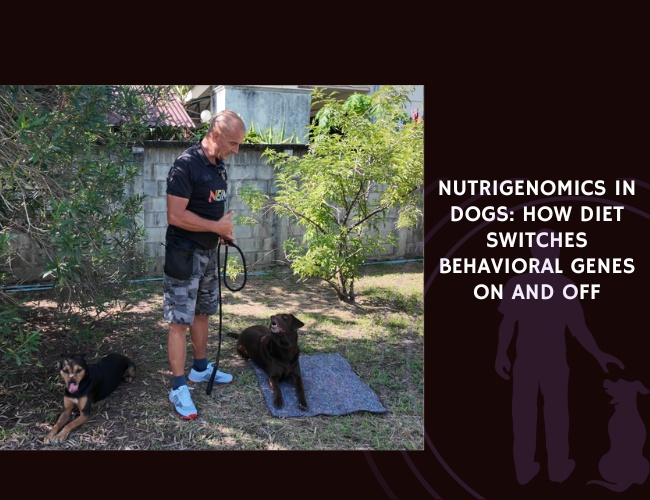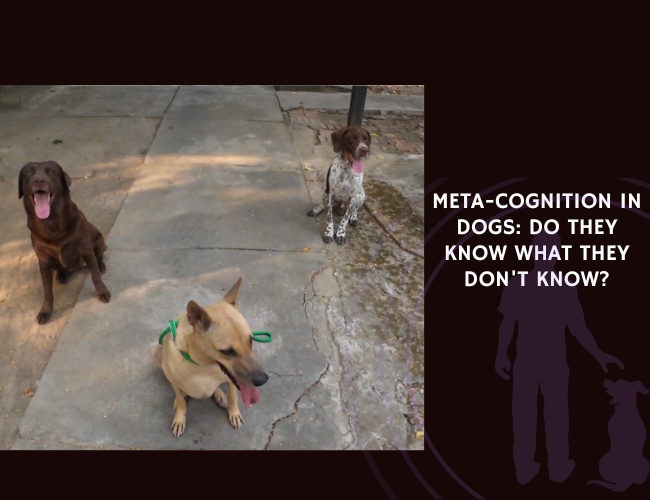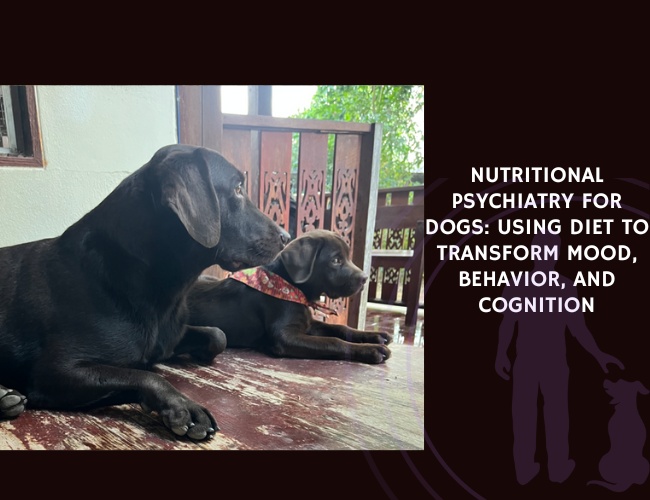Picture a snowy-white guardian standing sentinel over a flock, their ancient wisdom evident in every calculated movement—this is the Maremma Sheepdog, a breed whose 2,000-year legacy continues to shape modern livestock protection. Let us guide you through understanding these magnificent guardians, whose independent spirit and unwavering devotion have protected Italian flocks through millennia, and who now bring that same dedication to families worldwide.
Character & Behavior: Understanding Your Guardian’s Ancient Soul
The Historical Guardian Legacy
Did you know that descriptions of white guardian dogs appear in ancient Roman texts by Columella, Varro, and Palladius? Your Maremma carries the genetic wisdom of centuries, shaped by the demanding practice of transhumance—those annual treks from the mountain grasslands of Abruzzo to the winter pastures of Puglia. This isn’t just history; it’s the foundation of every behavior you’ll observe in your furry friend.
The Working Heritage That Shapes Today’s Dogs
The Maremma-Abruzzese has never stopped working because wolves never disappeared from central Italy’s Apennine Mountains. This continuous pressure created a dog with unmatched guardian instincts. When you see your Maremma positioning themselves between your family and a stranger, you’re witnessing thousands of years of selective breeding in action. Their ancestors learned to make life-or-death decisions independently, and this autonomous thinking remains deeply embedded in their DNA.
Your Maremma’s working heritage manifests in fascinating ways. They naturally patrol boundaries, even in suburban yards, following ancient patterns their ancestors used to secure mountain pastures. You might notice them choosing elevated positions for observation—this strategic positioning allowed their predecessors to spot wolves approaching from valleys below. 🐾
Temperament: The Independent Thinker
Living with a Maremma means understanding their unique temperament profile. These dogs combine fierce independence with touching devotion, creating a personality that’s both challenging and deeply rewarding. Your Maremma thinks for themselves—not out of stubbornness, but because centuries of solo decision-making shaped their cognitive patterns.
Intelligence Meets Independence
The Maremma’s intelligence operates differently from eager-to-please breeds. While a Border Collie asks “What can I do for you?”, your Maremma asks “Is this really necessary?” This isn’t defiance; it’s the hallmark of a breed bred to assess situations independently. They evaluate commands through the lens of necessity and logic, making them brilliant problem-solvers but challenging obedience students.
Their protective nature reveals itself gradually. Maremma puppies start life as friendly, social butterflies, but by age two, they develop the reserve that characterizes adult guardians. This transformation can surprise first-time owners who wonder where their outgoing puppy went. Rest assured, this change reflects healthy maturation, not a problem to fix.
Pack Dynamics and Family Bonds
Within your family, Maremmas establish clear hierarchies rooted in their pack-oriented heritage. They often choose a primary person while maintaining affectionate bonds with all family members. Children in the family become part of their “flock,” receiving gentle protection and remarkable patience. You’ll notice your Maremma positioning themselves where they can monitor all family members—this isn’t clinginess but strategic guardian positioning.
Cognitive Abilities: The Strategic Mind
Your Maremma’s cognitive abilities extend far beyond basic training responses. These dogs demonstrate environmental awareness that borders on uncanny, processing multiple stimuli simultaneously while maintaining calm vigilance. They remember individuals, categorizing them as “safe,” “unknown,” or “threat” with remarkable accuracy.
Threat Assessment Capabilities
Watch your Maremma evaluate a new situation—you’ll see them gathering data through all senses before responding. They differentiate between the mailman’s routine arrival and an unexpected visitor, between a neighbor’s cat and a potential predator. This sophisticated threat assessment developed through millennia of distinguishing between harmless wildlife and dangerous wolves.
Their memory for individuals proves exceptional. Your Maremma remembers friends who visit monthly and strangers who made them uncomfortable years ago. This selective memory serves their guardian role, allowing them to maintain mental databases of trust and suspicion that inform their protective responses.
Protective Instincts: The Graduated Response
Understanding your Maremma’s protective behaviors helps you appreciate their sophisticated defense strategy. These dogs employ a graduated response system, escalating only when necessary—a trait that made them valuable to shepherds who couldn’t afford dogs that attacked indiscriminately.
The Four Levels of Protection
- Alert Barking: Your Maremma’s first line of defense—that deep, resonant bark announces their presence and warns potential threats. This isn’t nuisance barking; it’s strategic communication.
- Physical Positioning: Notice how your Maremma places themselves between family and perceived threats? This body-blocking represents escalation, signaling serious intent without aggression.
- Intimidation Display: When truly concerned, Maremmas use their impressive size, raised hackles, and intensified vocalizations to deter threats. Most situations resolve at this level.
- Physical Intervention: Only when absolutely necessary will a Maremma engage physically. Their ancestors learned that avoiding violence preserved their ability to guard another day.
Vocalization & Communication: Understanding How Your Maremma ‘Talks’
The Language of Barks
Your Maremma’s vocal repertoire tells complex stories if you learn to listen. That deep, echoing bark carries across valleys—or suburban neighborhoods—with purpose and meaning. Each vocalization serves a specific communication goal, from gentle morning greetings to urgent midnight warnings.
Decoding the Bark Dictionary
The alert bark sounds different from the warning bark, which differs from the “I’m bored” bark. Alert barks typically consist of measured, spaced vocalizations—your Maremma announcing they’ve noticed something. Warning barks intensify in volume and frequency, signaling escalating concern. The play bark, lighter and accompanied by body language like play bows, invites interaction.
Night barking presents particular challenges for suburban Maremma owners. These dogs remain vigilant through darkness, responding to sounds imperceptible to human ears. While you sleep, your guardian processes every rustling leaf, every passing car, every neighborhood cat. This nocturnal vigilance protected flocks from wolves; in modern settings, it might protect your home from… well, leaves rustling. 😄
Body Language: The Silent Conversation
Beyond vocalizations, your Maremma communicates volumes through body language. Their expressive faces, mobile ears, and meaningful tail positions create a rich non-verbal vocabulary. Understanding these signals strengthens your bond and helps you anticipate their needs.
Reading the Physical Signals
A relaxed Maremma displays soft eyes, loose body posture, and that gentle tail wag that seems to move their entire backend. During guardian mode, watch for the transformation: eyes sharpen, body stiffens, tail rises to horizontal or higher. These shifts happen instantly when they detect potential threats.
The famous “Maremma lean”—when your dog presses their considerable weight against you—communicates affection and claims you as theirs. This touching behavior reinforces pack bonds while allowing them to monitor your emotional state through physical contact. When stressed or uncertain, many Maremmas seek this contact for reassurance.
Training & Education: Guiding Your Independent Thinker
Early Socialization: The Critical Window
The first two years of your Maremma’s life determine their adult temperament more than any other factor. During this critical window, exposure to diverse experiences shapes their threat assessment algorithms for life. Miss this opportunity, and you’ll struggle to modify their responses later.
The 40-Day Rule for Working Dogs
Traditional Italian shepherds place guardian puppies with their flocks by 40 days old, ensuring primary bonding occurs with sheep rather than humans. For companion Maremmas, this principle translates to early, intensive socialization with your intended lifestyle. If you want a dog comfortable with visitors, expose them to hundreds of friendly strangers before age two.
Your socialization checklist should include diverse people (different ages, ethnicities, clothing styles), various animals, urban environments if relevant, and different surfaces, sounds, and situations. Each positive experience builds their database of “normal,” reducing future guardian responses to benign stimuli.
Balancing Guardian Instincts with Social Skills
The challenge lies in preserving protective instincts while creating social tolerance. You don’t want to eliminate their guardian nature—that’s their essence—but you need to channel it appropriately. Teach your Maremma that not every stranger threatens their family, but maintain their ability to recognize genuine threats.
Obedience Training: The Art of Negotiation
Training a Maremma requires abandoning traditional dominance-based methods. These dogs respond to respect, not force; to logic, not blind obedience. Your training approach should feel more like negotiation between equals than master-servant dynamics.
Positive Reinforcement Strategies
Start obedience training by eight weeks, using positive reinforcement exclusively. Harsh corrections damage the trust essential for Maremma cooperation. When your Maremma complies with a command, they’re choosing to cooperate—reward that choice enthusiastically. High-value treats, enthusiastic praise, and play rewards work better than repetitive drilling.
Remember that Maremmas question commands’ necessity. “Sit” makes sense when it serves a purpose (waiting for dinner, greeting visitors calmly) but seems arbitrary when requested randomly. Frame commands within logical contexts: “Sit” before meals, “Wait” at doorways, “Come” for positive interactions. This contextual training aligns with their practical intelligence.
The Independence Challenge
Accept that your Maremma will never display Border Collie-style obedience. They’ll pause before complying, evaluating whether your command makes sense given current circumstances. This thinking pause frustrates some owners but represents healthy Maremma cognition. Patience during these moments builds trust and improves future compliance.
Consistency matters more than intensity. Every family member must use identical commands and expectations. Maremmas exploit inconsistencies, not from defiance but because mixed messages confuse their logical processing. Create clear, consistent rules that make sense, and your Maremma will generally follow them.
Specialized Skills: Channeling Ancient Abilities
Your Maremma’s guardian abilities can adapt to modern roles with proper channeling. Whether protecting chickens in suburban backyards or serving as therapy dogs, these versatile guardians excel when their instincts align with their jobs.
Livestock Guardian Training
For actual livestock guardianship, trust your Maremma’s instincts while providing framework. Introduce them to their charges gradually, supervising initial interactions. Most Maremmas naturally bond with livestock, viewing them as vulnerable pack members requiring protection. Your role involves reinforcing appropriate behaviors rather than teaching guardian basics.
Modern applications extend beyond traditional livestock. Some Maremmas protect endangered penguins in Australia, demonstrating their adaptability. Urban Maremmas might guard children, property, or even koi ponds from predators. The key lies in identifying what needs protection and allowing controlled expression of guardian instincts.

Performance & Activities: Engaging Your Working Dog
Exercise Requirements: More Than Just Physical
Your Maremma’s exercise needs differ from typical large breeds. While they require physical activity, mental stimulation and purposeful work matter more than marathon runs. Understanding this distinction helps you meet their true needs.
Working Dogs vs. Companion Dogs
Working Maremmas self-exercise through patrol behaviors, covering miles nightly while checking boundaries. Companion Maremmas need structured activities replacing this natural exercise. Plan for 30-60 minutes of purposeful activity daily, emphasizing exploration and investigation over repetitive fetch games.
Walking your Maremma should feel like patrol duty. Allow sniffing, investigating, and marking—these behaviors satisfy guardian instincts. A two-mile walk with frequent stops for environmental assessment provides better satisfaction than a fast-paced jog where they can’t engage their senses. Think quality over quantity; engagement over exhaustion.
Mental Enrichment Activities
Mental stimulation prevents boredom-related problems in these intelligent dogs. Puzzle feeders, scent work, and hide-and-seek games engage their problem-solving abilities. Create “guardian challenges” by hiding treats around your property, encouraging natural patrol and investigation behaviors.
Consider activities that simulate working roles. Teach your Maremma to “check on” family members, making rounds to ensure everyone’s safety. This purposeful activity satisfies guardian instincts while providing gentle exercise. Some Maremmas enjoy “herding” children during backyard play, circling to keep everyone together—channel this instinct appropriately. 🧠
Adaptability Challenges: Modern Life Meets Ancient Breed
Living with a Maremma in contemporary settings requires understanding their adaptability limitations. These dogs evolved for specific environments; forcing them into incompatible lifestyles causes suffering for dog and owner alike.
Rural Paradise vs. Urban Challenge
Rural properties represent Maremma paradise. Acreage for patrolling, clear boundaries to defend, and minimal stranger interaction align perfectly with their nature. Even small farms provide adequate outlets for guardian behaviors. The “close-in” guarding style means they respect fences, staying near their charges rather than roaming.
Suburban life presents challenges but remains manageable with proper planning. Large, securely fenced yards become patrol territories. However, proximity to neighbors means managing barking becomes crucial. Your Maremma doesn’t understand property lines—they’ll alert to activities three houses away. Training “quiet” commands and providing visual barriers helps reduce reactivity.
Urban and apartment living generally proves incompatible with Maremma needs. The constant stream of strangers, limited space, and inability to patrol create chronic stress. Some exceptional individuals adapt to city life, but most suffer from hypervigilance and anxiety in dense environments. Be honest about your living situation before choosing this breed.
Nutritional Recommendations: Fueling Your Guardian
Large-Breed Nutrition Fundamentals
Your Maremma’s nutritional needs reflect their size, metabolism, and activity level. These aren’t high-energy dogs despite their size; their calm guardian style requires fewer calories than similarly-sized active breeds. Understanding their unique nutritional requirements prevents obesity while maintaining optimal health.
Calculating Caloric Needs
Adult Maremmas typically need about four cups of high-quality dry food daily, divided into two meals. This varies based on age, activity, and metabolism. Working guardians require more calories than couch-potato companions. Monitor body condition regularly—you should feel ribs easily but not see them prominently.
Choose large-breed formulas with controlled calcium and phosphorus levels. Protein content around 22% supports muscle maintenance without promoting excessive growth. Quality matters more than quantity; premium foods with named meat sources provide better nutrition than grocery store brands with fillers.
Life Stage Considerations
Puppy nutrition critically impacts adult health. Large-breed puppy formulas control growth rate, preventing developmental orthopedic diseases. Feed puppies 2¾ cups daily divided into three meals until seven months, then transition to twice-daily feeding. Never accelerate growth through overfeeding—slow, steady growth produces healthier adults.
Senior Maremmas (7+ years) benefit from adjusted nutrition. Reduce calories if activity decreases, but maintain protein quality for muscle preservation. Senior formulas with added joint support ingredients help maintain mobility. Some seniors develop pickier appetites; warming food or adding low-sodium broth encourages eating.
Preventing Nutritional Health Issues
Your Maremma’s deep chest predisposes them to bloat (gastric dilatation-volvulus), a life-threatening emergency. Nutritional management significantly reduces risk through careful feeding practices.
Bloat Prevention Protocol
Never feed one large meal—divide daily rations into two or more smaller feedings. Avoid exercise for one hour before and after meals. Elevated feeders, once recommended, may actually increase bloat risk; feed at ground level unless veterinary-directed otherwise. Use slow-feeder bowls for enthusiastic eaters who gulp food.
Monitor for bloat symptoms: unsuccessful vomiting attempts, distended abdomen, restlessness, excessive drooling. Bloat constitutes an immediate emergency requiring veterinary intervention within minutes, not hours. Discuss prophylactic gastropexy with your veterinarian, especially for high-risk individuals.
Coat and Skin Nutrition
That magnificent white coat requires nutritional support for optimal health. Essential fatty acids, particularly omega-3s and omega-6s, maintain skin barrier function and coat luster. Quality proteins provide amino acids necessary for hair structure.
Supplement Considerations
While balanced commercial foods provide basic nutrition, some Maremmas benefit from targeted supplementation. Fish oil supports coat health while providing anti-inflammatory benefits for joints. Biotin and B-complex vitamins enhance coat quality. Zinc supplementation helps some dogs with skin issues, but requires veterinary guidance to avoid toxicity.
During shedding season (and yes, you’ll know when it arrives), increased brushing removes dead coat while nutritional support encourages healthy regrowth. Never shave your Maremma’s coat—it disrupts temperature regulation and sun protection. That double coat insulates against both heat and cold, functioning better than any human intervention. 🐾
Majestic. Independent. Steadfast.
A heritage written in vigilance. For over two millennia, the Maremma Sheepdog has stood watch over flocks in the rugged Italian landscape. Every patrol, every watchful glance from an elevated post reflects the instincts shaped by transhumance and the ever-present threat of wolves.
Independence as intelligence. Unlike breeds bred to take constant direction, Maremmas think for themselves. Their calm assessments and measured decisions echo generations of solitary guardianship. They don’t ask “what do you want?”—they ask “is this necessary for protection?”
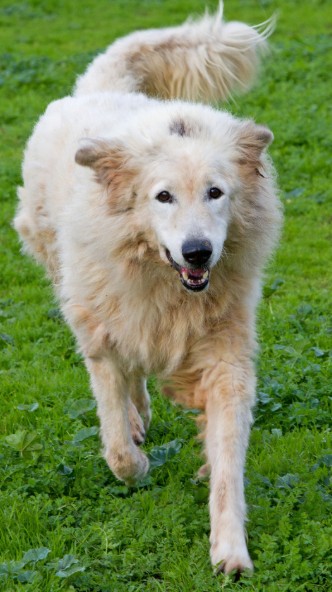
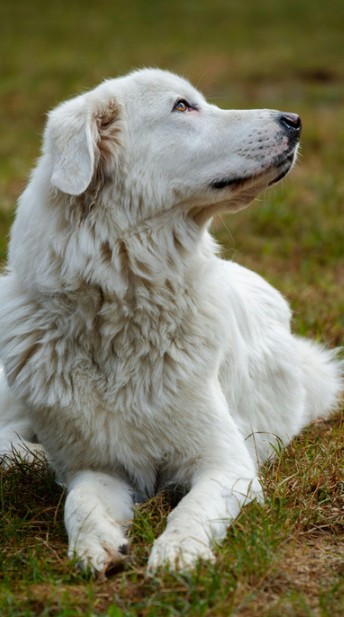
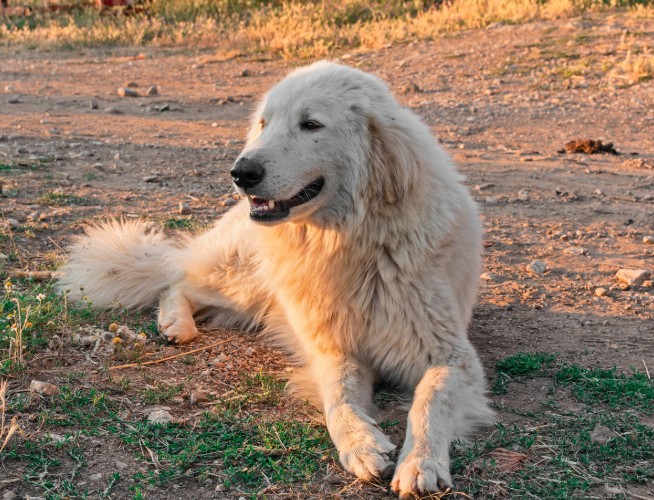
Family as flock. With time, their youthful friendliness matures into dignified devotion. Children and loved ones fall under their quiet, patient guardianship, while their loyalty deepens into an unshakable bond. A Maremma isn’t just a pet—they’re a sentinel, a partner, and a living link to an ancient covenant of protection.
Health Concerns: Maintaining Your Guardian’s Wellbeing
Orthopedic Considerations
Large breeds face orthopedic challenges, and Maremmas are no exception. Hip and elbow dysplasia represent primary concerns, though careful breeding reduces incidence. Understanding these conditions helps you provide preventive care and early intervention when needed.
Hip Dysplasia Management
Hip dysplasia involves abnormal hip joint formation, causing pain and arthritis. While genetics play a major role, environmental factors significantly impact expression. Maintain optimal weight throughout life—excess pounds stress developing and mature joints. Provide appropriate exercise without excessive jumping or stair climbing during growth phases.
Screening protocols help identify affected dogs before breeding. Reputable breeders provide Orthopedic Foundation for Animals (OFA) certifications proving parents’ hip and elbow status. Even with clear parents, offspring can develop dysplasia, but risks decrease significantly with health-tested breeding stock.
Early Detection and Intervention
Watch for subtle signs: bunny-hopping gait, difficulty rising, reluctance to jump or climb stairs, decreased activity. Early detection allows interventions like weight management, physical therapy, and joint supplements before severe arthritis develops. Some dogs require surgical intervention, but many manage well with conservative treatment.
Swimming provides excellent low-impact exercise for dysplastic dogs. The buoyancy reduces joint stress while building supporting musculature. If you have access to safe swimming areas, introduce your Maremma gradually—not all appreciate water initially, but most learn to enjoy therapeutic swims.
Ocular Health Monitoring
Several eye conditions affect Maremmas, though most remain minor concerns with proper management. Regular ophthalmic examinations detect issues early, preventing progression to vision impairment.
Common Eye Conditions
Entropion (inward-rolling eyelids) and ectropion (outward-rolling eyelids) occur in some bloodlines. These conditions cause irritation requiring surgical correction. Watch for excessive tearing, squinting, or eye rubbing—early intervention prevents corneal damage.
Distichiasis—abnormally positioned eyelashes touching the cornea—causes chronic irritation. Symptoms include excessive blinking, tearing, and pawing at eyes. Various treatments exist, from plucking to surgical removal, depending on severity. Regular grooming around eyes prevents hair-related irritation mimicking these conditions.
Longevity Factors: Maximizing Healthy Years
Maremmas typically live 10-13 years, respectable for large breeds. Multiple factors influence individual longevity, many within owner control. Understanding these factors helps you maximize your guardian’s healthy years.
Lifestyle Impact on Lifespan
Working Maremmas often outlive pampered pets, paradoxically. Purposeful work provides mental stimulation and appropriate exercise, preventing obesity and boredom-related stress. If your Maremma lacks actual guardian duties, create artificial “jobs” maintaining their sense of purpose.
Preventive healthcare extends quality and quantity of life. Annual examinations detect problems early. Dental care prevents systemic infections. Parasite prevention protects against vector-borne diseases. These routine measures seem basic but profoundly impact longevity. Regular grooming identifies lumps, bumps, and skin issues before they become serious.
Genetic Diversity Benefits
The Maremma’s relatively diverse gene pool, maintained through working populations, provides health advantages over some purebreds. However, popular sire syndrome threatens this diversity. Choose breeders who prioritize genetic diversity over champion titles. A broader gene pool means healthier, more resilient dogs with fewer inherited disorders.
Lifestyle & Environment: Creating the Perfect Maremma Life
Space and Territory Requirements
Your Maremma’s space needs extend beyond simple square footage. These dogs require territory to patrol, boundaries to defend, and environmental complexity for mental stimulation. Understanding their spatial needs helps you provide appropriate environments.
The Patrol Instinct
Maremmas naturally patrol boundaries, checking perimeters multiple times nightly. This isn’t restlessness—it’s purposeful behavior providing psychological satisfaction. Properties with clear boundaries (fences, natural barriers) offer better satisfaction than undefined spaces. Your Maremma needs to know what they’re protecting.
Even in smaller yards, create patrol routes. Place interesting features (rocks, plants, elevated areas) creating investigation points. Rotate toys and scents periodically, providing novelty within familiar territory. This environmental enrichment satisfies exploration needs without requiring vast acreage.
Climate Adaptations
That impressive double coat provides remarkable climate flexibility. Maremmas tolerate temperature extremes better than most breeds, though they require appropriate support in challenging conditions.
Cold Weather Champions
Winter represents Maremma comfort season. Their dense undercoat and weather-resistant outer coat provide exceptional insulation. Many Maremmas prefer sleeping outdoors in snow, refusing warm houses for cold ground. This isn’t neglect if they choose it—trust their instincts about comfort.
Provide adequate shelter options without forcing indoor living. A simple doghouse or covered area allows choice. Many Maremmas use shelter during precipitation but prefer open sky otherwise. Watch for ice balls forming between toes—the only real winter concern for most individuals.
Summer Strategies
Hot weather requires more management than cold. Never shave that protective coat—it provides insulation and sun protection. Instead, ensure constant water access, shade availability, and reduced midday activity. Some Maremmas enjoy kiddie pools for cooling; others completely avoid water.
During extreme heat, adjust exercise timing to early morning or late evening. Watch for heat stress signs: excessive panting, drooling, weakness, or confusion. White coats reflect heat better than dark colors, but these dogs still need summer support. Air conditioning isn’t mandatory but appreciated during heat waves. 🧡
Family Integration Dynamics
Successfully integrating a Maremma into family life requires understanding their unique social needs. These aren’t golden retrievers seeking constant interaction—they show affection differently, valuing proximity over constant touching.
Children and Maremmas
Maremmas display remarkable gentleness with family children, often becoming devoted guardians. They tolerate ear pulls and tail tugs from “their” children while maintaining dignity. However, supervise interactions with visiting children—your Maremma might not extend the same patience to strangers.
Teach children to respect your Maremma’s space and signals. When the dog retreats, children must allow privacy. During guard mode, children shouldn’t interfere—attempting to restrain a protecting Maremma endangers everyone. Establish clear rules about when children can and cannot interact with the dog.
Multi-Pet Households
Maremmas generally coexist peacefully with other animals when properly introduced. They view family pets as pack members deserving protection. However, same-sex aggression occasionally occurs, particularly between intact individuals. Opposite-sex pairs typically work better than same-sex combinations.
Cats become cherished pack members if introduced properly. Your Maremma might attempt to herd cats, keeping them within safe boundaries. Small pets (rabbits, chickens) trigger protection instincts rather than prey drive when raised together. Strange animals entering the property receive different treatment—your Maremma distinguishes between family and intruders.
Senior Care: Honoring Your Aging Guardian
Physical Changes and Adaptations
As your Maremma ages, their needs evolve while their devotion remains constant. Senior Maremmas (7+ years) require adjusted care maintaining quality of life. Understanding aging changes helps you provide appropriate support.
Mobility Modifications
Arthritis affects most senior large breeds. Your once-agile guardian might struggle with stairs or slippery floors. Provide ramps for vehicle access, non-slip rugs on smooth surfaces, and orthopedic bedding supporting aging joints. Maintain gentle exercise—movement prevents stiffness while excessive activity causes pain.
Consider physical therapy or swimming for arthritic seniors. Massage helps circulation and provides bonding time. Some seniors benefit from acupuncture or chiropractic care. Pain management might include medications, supplements, or alternative therapies. Work with your veterinarian creating comprehensive comfort plans.
Sensory Decline Support
Vision and hearing often decline with age. Your Maremma might not respond to calls or startle when touched unexpectedly. Maintain consistent furniture placement, avoiding environmental changes confusing dogs with decreased vision. Use hand signals alongside verbal commands, preparing for potential deafness.
Despite sensory decline, most Maremmas maintain guardian instincts. They might bark more frequently, unable to identify sounds clearly. Patience and understanding help them adjust while maintaining dignity. Never punish confusion or anxiety stemming from sensory loss—provide reassurance instead.
Mental and Emotional Wellbeing
Senior Maremmas need mental stimulation preventing cognitive decline. While physical capabilities decrease, mental engagement remains crucial for life quality.
Cognitive Enrichment for Seniors
Adapt activities to physical limitations while maintaining mental challenge. Scent work requires minimal physical effort while engaging powerful cognitive processing. Hide treats at ground level, encouraging investigation without jumping or climbing. Simple training sessions learning new tricks prove you can teach old dogs new skills.
Maintain social connections preventing isolation. Senior Maremmas often become more affectionate, seeking increased human contact. Honor this need while respecting their independence. Short, frequent interactions work better than lengthy sessions exhausting aging bodies.
End-of-Life Considerations
Eventually, you’ll face difficult decisions about your guardian’s quality of life. Maremmas often hide pain stoically, making assessment challenging. Watch for subtle signs: decreased appetite, withdrawal from family, inability to perform previously enjoyed activities.
Quality of life scales help objective assessment during emotional times. Consider physical comfort, mental engagement, and dignity. Your Maremma gave years of devoted protection—honor that service with compassionate decisions prioritizing their wellbeing over your attachment. The final gift you give your guardian is peaceful release from suffering when appropriate.
Conclusion: Is the Maremma Sheepdog Right for You?
After exploring every aspect of Maremma ownership, you understand these aren’t dogs for everyone. Their ancient guardian heritage creates unique challenges and rewards requiring specific lifestyles and commitments. Let’s synthesize this information helping you make an informed decision.
The Reality Check
Maremmas demand experienced owners understanding independent breeds. If you expect immediate obedience, constant affection, or adaptability to urban living, look elsewhere. These dogs require rural or large suburban properties, tolerance for barking, and respect for independent thinking. They shed profusely, need early socialization, and never become social butterflies with strangers.
Financial commitments extend beyond purchase price. Quality food for large breeds, regular veterinary care, secure fencing, and potential property modifications add up. Emergency veterinary funds become essential—bloat surgery costs thousands and can’t wait for payday. Consider whether you’re prepared for 10-13 years of these expenses.
The Rewards of Guardianship
For appropriate owners, Maremmas offer unparalleled devotion and protection. You’ll never feel unsafe with these guardians watching over your family. Their calm presence provides security while their gentle nature with loved ones creates deep bonds. Watching a Maremma work—whether guarding sheep or children—reveals purpose-bred perfection.
The intellectual challenge of training independent thinkers rewards patient owners. Each successful communication feels earned rather than given. Your relationship becomes partnership between equals rather than master-servant dynamics. This mutual respect creates bonds different from, but not less than, those with biddable breeds.
Making Your Decision
Ask yourself honestly: Can you provide appropriate environment, patience for independent thinking, early and ongoing socialization, purposeful work or activities, and long-term commitment through aging? If you answered “no” to any element, reconsider your choice. Maremmas in inappropriate situations suffer, and rehoming these bonds-for-life dogs causes lasting trauma.
If you can provide what Maremmas need, prepare for a transformative experience. These ancient guardians bring living history into your home, continuing traditions stretching back to Roman times. Your Maremma won’t just be a pet—they’ll become family guardians, loyal companions, and teachers of patience, respect, and unconditional protection.
The Maremma Sheepdog represents humanity’s oldest partnership with guardian dogs. Whether protecting endangered penguins or backyard chickens, guarding sheep or children, these magnificent dogs continue fulfilling their ancient purpose. For those willing to understand and respect their unique nature, Maremmas offer devotion as enduring as their mountain homeland, protection as reliable as sunrise, and companionship as warming as their thick, white coat. The question isn’t whether the Maremma is a good dog—it’s whether you’re prepared to be the owner they deserve. 🐾

